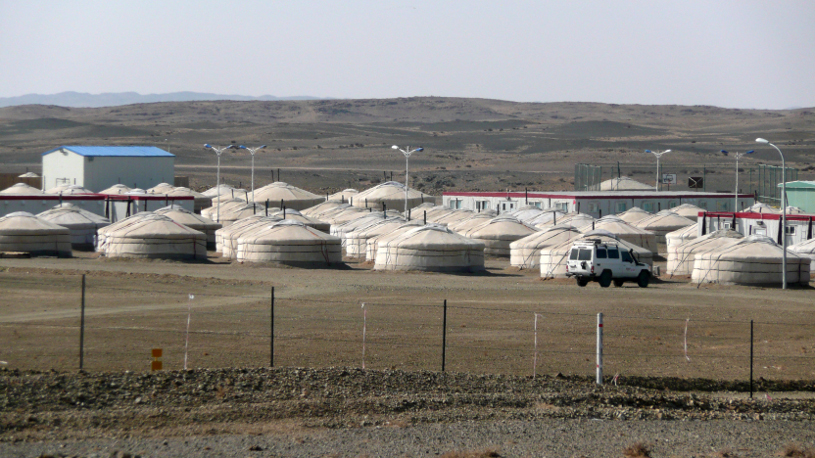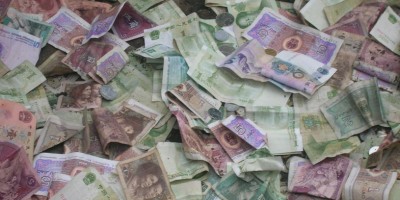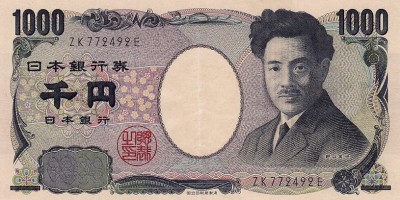On February 1st President Elbegdorj participated in a session of parliament to discuss management and cost issues surrounding the Oyu Tolgoi (OT) mine project. During the session the President, Minister of Mining D. Gankhuyag, and Erdenes Oyu Tolgoi (EOT) Director Ts. Sedvanchig had a series of exchanges regarding what the President perceived as escalating costs for the project.1
These exchanges and the President’s extended remarks on the issue included many numbers, references to the OT stability agreement and shareholders agreement, and a general sense that costs are being inflated as a result of mismanagement or more sinister reasons. Since that session of parliament the issue of expenditure overruns has come up several more times in the coverage of the on-going OT dispute between the government and Rio Tinto, but what I have read has generally lacked a clear explanation of why this is even relevant to the dispute. After all, aren’t Rio Tinto and other international investors carrying the burden of the project’s costs, so what benefit would they get from inflating those costs? There are complicated technical points to go over in order to really understand the issue, and this complexity scares off all but the wonkiest policy nerds among us. What follows is an attempt to make the issue more accessible to the non-nerd.
OT Stability Agreement and Shareholders Agreement
Let’s start with some necessary details. The OT stability agreement lays out in Article 1.6 that Mongolia shall initially own a 34 percent stake in the mine project with a potential option to purchase 16 percent of the project at the end of the initial 30 year term of the agreement.2 The rights of the shareholders in the project are further outlined in an amended shareholders agreement executed June 8, 2011. The project is consolidated in a corporate entity known as Oyu Tolgoi LLC (OTL), and Section 4.1 of that agreement states that Erdenes MGL LLC (EML), a wholly owned company of the government of Mongolia, holds 34 percent of common stocks in OTL.3 The agreement further states that these stocks cannot be diluted without the consent of the government. EOT is the corporate entity with direct oversight for the project on behalf of EML. The other 66 percent of OTL is held by two Netherlands based subsidiaries of Turquoise Hill Resources (THR) (formerly Ivanhoe Mines). Rio Tinto in turn owns a majority stake in THR. Diagram 1 provides a visualization of the relationships of the organizations involved.

Diagram 1. Oyu Tolgoi LLC ownership structure flow chart.
As common stockholders of OTL, both EML and THR have the right to nominate members of the board of directors to represent their interests in the company proportional to their ownership stake. Mongolia has three members who are nominated by the government, and THR has 6 members who are nominated by Rio Tinto as the majority shareholder of THR. Moreover, both EML and THR are responsible for covering the costs of developing the mine.
Section 9 of the shareholders agreement outlines how OTL is financed. The mechanism is referred to as a “called sum,” and essentially it is an official request for funds by the OTL management team to the board of directors based on the approved annual budget to cover on-going expenditures. EML and THR are responsible for providing those funds proportional to their ownership stake, which again is 34 and 66 percent, respectively. Diagram 2 provides a visualization of this arrangement with the called sum proportionally divided. The agreement allows shareholders to cover called sums through issuance of preferred stocks or other debt financing. Section 11 further allows EML to elect not to contribute immediately to the called sums, and THR has the option to fund EML’s portion on EML’s behalf through financing options allowed in the agreement. This essentially means that EML can put its contribution on credit to be paid at a later date, and the government will eventually be required to cover 34 percent of all expenditures (plus any interest and fees) to settle that accumulated debt.
The distinction between common stocks and preferred stocks is very important to understand here. Preferred stocks are essentially debt instruments like a loan or bond. Preferred stockholders have first claim to dividends and assets within the company much like a bank has first claim on a mortgaged house. Common stockholders must discharge their debt obligations to the preferred stockholders before they can claim a share of the profits of the company much like a homeowner selling a mortgaged house must settle his mortgage debt with the bank before he can collect any remaining profit. In other words, until common stockholders are debt free owners of the company, they are required to pay their creditors before they pay themselves. The shareholders agreement makes this clear, and EML will not receive dividends on the OT project until it has discharged its accumulated investment debt.
The Relevance of Cost Overruns
With this information it becomes easier to understand why expenditure overruns are a major concern of the government. The more the project costs in its initial development, the longer it will take before Mongolia can begin collecting its 34 percent of profit. It is also easier to see how complicated the arrangement is and how that complexity makes it extremely vulnerable to political misrepresentations and even sincere misunderstandings.

Diagram 2. Called sums are payments to capital expenditures proportional to ownership stake.
At present THR estimates that the total initial investment in the project, which ends with commencement of commercial production in 2013, will add up to USD 6.2 billion.4 In the President’s criticism of OTL’s management many numbers about the estimated and true costs of this initial investment were thrown around. However, a look at just a few public financial documents from THR indicates that the company has not deviated far from its stated plans. The company’s 2010 financial statement reported that approximately USD 1.4 billion had been expended at that point in the project and that an additional USD 4.5 billion in financing was needed to reach full commercial production in 2013.5 This is confirmed with a filing to the Securities and Exchange Commission in the United States.6 These are legally binding public financial statements on the part of THR, and they are therefore as accurate as any estimates can be expected. Adding them together produces a total projected expenditure in 2010 of USD 5.9 billion to reach commercial production by 2013. This subtracted from the current estimate of USD 6.2 billion produces an overrun of approximately USD 300 million, which crudely calculated adds no more than USD 100 million to EML’s debt obligations.
That is a relatively small overrun, so the more pressing concern of the government may be the fact that Rio Tinto has sought at least USD 4 billion more in financing to begin phase two of the mine’s development and to cover initial commercial operating costs. This represents a much more significant hit to EML’s debt load, and therefore extends the time frame in which Mongolia may begin collecting dividends. As such, keeping costs down must be perceived as a way to speed up receipt of those dividends. It is easy to see why the government might view the situation that way, but it also could be described as being “penny wise and pound foolish.” Obviously the government shouldn’t pay for development costs that are unnecessary, but it shouldn’t also avoid costs that are necessary just to save money in the short term. The goal should be to build a world class mining facility that maximizes the country’s benefit in the project, and skimping on costs just to avoid costs is not good management. In some ways, the structure of the agreement oddly forces the government into a state of fiscal constraint. The value of its ownership stake is illiquid until it discharges its debts, but in the abstract it is like an asset or trust with a maturity date that prevents its value from being squandered as the result of short-term political games (assuming the mine goes into production, of course). Plus, in the interim, the country still receives value from the project through taxes, royalties, and fees.
Hypothetical Implications of Cost Overruns
An unstated assumption in that last paragraph is that the “maturity” of Mongolia’s stake is a reasonably fixed point in time. Whether it is or not is not entirely clear to me from reading the shareholders agreement, and it actually strikes me as the real issue of discussion rather than the costs. The President touched on this issue indirectly in the session in parliament. There was discussion about whether some portion of the financing for phase two of OT’s development would be paid to Rio Tinto as repayment for earlier loans to the project. The general implication in the discussion was that Rio Tinto is already collecting on the project while the government may have to wait many more years to get its first share of the profit. There are potential problems with this logic. The government is a net debtor in the project thus far. Rio Tinto is a creditor for portions of the debt, and therefore has rights similar to preferred stockholders.
This additional layer of complexity in the financing of the project raises a more pertinent issue than cost overruns. Is it conceivable without explicit and mutually agreed upon constraints that EML might find itself unable to ever fully build equity in OTL because after discharging payments to preferred stockholders and other creditors there will be little left over to also pay down accumulated called sum debt? This would be a situation in which one always pays the interest on a debt but is never able to actually reduce the principal. This sort of scenario is captured in the lyrics of the Tennessee Ernie Ford song “Sixteen Tons” in which a coal miner can never haul enough coal in a day to escape his debt at the company store.
“You load sixteen tons, what do you get
Another day older and deeper in debt
Saint Peter don’t you call me ’cause I can’t go
I owe my soul to the company store”
This is not to suggest the agreement is purposely structured that way but rather to point out that the complexity of the arrangement makes it easy to construe the possibility of such an occurrence. As such, the management of EML and EOT must track the accumulated debt of the called sums like any financing the country accepts. The exchange between the President and the EOT director in the session of parliament gave me the impression that EOT is not doing a very good job of staying on top of the accounting for the debt obligations created by the called sums. If this is the case, this would explain in part why the President intimated that the government is being ill-informed by OTL about expenses on the project. That criticism was levelled at Rio Tinto to suggest a lack of transparency, but it seems rather misguided when considering the shareholders agreement. EML has the responsibility to either pay its portion of a called sum or elect to receive financing. As the government acquires debt on called sums, EML in theory should be notified and then approve the expenses. So, if the government is ill-informed about expenses, the evidence available indicates to me that it is an issue with management at EML or within the government itself rather than the availability of information about expenditures. Note that all the information in this post is from publicly available documents–not insider knowledge. If THR has not been providing this information, then the management at EML should have raised this issue several billion dollars ago. The public availability of much of this information, though, raises the question of what the management of EML has been doing to ensure the fiscal responsibility of the project on Mongolia’s behalf.
Complexity Requires Earnest Effort to Understand
The take away from looking at the stability agreement and shareholders agreement is that both are complicated and require an earnest effort to understand. I don’t have the expertise to render a reliable opinion about whether Mongolia has made a good or bad deal for itself, but overall it doesn’t seem as bad as its most outspoken critics make it out to be. In fact, it actually looks like a pretty good deal. Mongolia has a protected legal stake in the project, and it has rights as a shareholder in the mine. Whether Mongolia is effectively using its stake or exercising its rights is another question. The government should ensure that OT is being managed properly and expenditures reflect the true cost of development, but there is little evidence at this point that waging a war of words with Rio Tinto about costs is an effective way to accomplish that goal.
A Note from the Author
If there are any factual inaccuracies or misinterpretations in this post regarding the OT stability agreement, shareholders agreement, or the relationships between the different stakeholders, please note them in the comments section below. The aim here is to have the most accurate representation of the situation to help average observers understand what is going on. Errors, if any, are accidental and a reflection of my own limited capacity as a policy nerd to synthesize large amounts of boring information and legalese.
Footnotes
1. See “Оюу толгой хуулийг яаж хэрэгжүүлдэг, яаж хүндэтгэдэг, яаж ил тод, хяналттай ажилладаг гэдгээ харуулах ёстой”, Website of the President’s Office, http://www.president.mn/mongolian/node/3190, February 1, 2013, (accessed March 8, 2013).
2. See “Stability Agreement October 6, 2009”, http://www.turquoisehill.com/i/pdf/Oyu_Tolgoi_IA_ENG.PDF.
3. See “Amended Shareholders Agreement June 8, 2011”, http://www.turquoisehill.com/i/pdf/OT-ARSHA-ENG-2011-06-08-Executed.pdf.
4. “Press Release: Turquoise Hill Resources provides Oyu Tolgoi project update”, Turquoise Hill Resources, http://www.turquoisehill.com/s/news_releases.asp?ReportID=571083, February 14, 203, (accessed March 8, 2013).
5. “Year End Financials as at December 31, 2010”, Turquoise Hill Resources, http://www.turquoisehill.com/i/pdf/2010-YE.pdf, March 28, 2011, (accessed March 8, 2013), pg. 2.
6. “Form 6-K: Report of Foreign Private Issuer”, http://www.sec.gov/Archives/edgar/data/1158041/000095012310113968/c09830e6vk.htm, December 15, 2010, (accessed March 7, 2013), pg. 3.



